- Home
- Barbara Pym
A Very Private Eye: The Diaries, Letters and Notebooks of Barbara Pym
A Very Private Eye: The Diaries, Letters and Notebooks of Barbara Pym Read online
Bello:
hidden talent rediscovered
Bello is a digital only imprint of Pan Macmillan, established to breathe life into previously published classic books.
At Bello we believe in the timeless power of the imagination, of good story, narrative and entertainment and we want to use digital technology to ensure that many more readers can enjoy these books into the future.
We publish in ebook and Print on Demand formats to bring these wonderful books to new audiences.
www.panmacmillan.co.uk/bello
Contents
Barbara Pym
Acknowledgements
Foreword
Preface
The Early Life by Hilary Pym
Part I
1932-1939
1932
1933
1934
1935
1936
1937
1938
1939
Part II
1940–1945
Adapting to the War
After Christmas I
After Christmas II
Naples
Part III
The Published Novelist
1948-1963
The Unpublished Novelist
1963-1977
Recognition
1977–1979
Barbara Pym
A Very Private Eye
A writer from the age of sixteen, Barbara Pym has been acclaimed as ‘the most underrated writer of the century’ (Philip Larkin). Pym’s substantial reputation evolved through the publication of six novels from 1950 to 1961, then resumed in 1977 with the publication of Quartet in Autumn and three other novels. She died in 1980.
We wish to express our thanks to Philip Larkin and Bob Smith who have kindly allowed us to use the letters they received from Barbara, which form a major part of the third section of this book. We are deeply grateful for their help and encouragement in so many ways.
Our thanks are also due to Henry Harvey and to Elsie Harvey for permission to use their letters from Barbara, and we are very grateful indeed to the former for his meticulous annotations which helped us to keep straight the chronology of the letters and the geographical whereabouts of the recipients. We would also like to thank Richard Roberts, who so kindly sent us Barbara’s letters to him as well as the photograph which we wished to include in this volume.
We are greatly indebted to Tim Rogers and Colin Harris of the Bodleian Library, Oxford, for their friendly help and efficiency. Our grateful thanks are also due to Robert Liddell for valuable information and comments; to Honor Ellidge (Wyatt) for her help and support; to Sylvia James and Molly Marshall for a great deal of practical help that was quite invaluable; and to Tom Holt for his help in the preparation of the manuscript and for giving us the title for the book.
We are very conscious of the stimulus we have received from the many admirers and students of Barbara’s work, especially visitors from the United States, who convinced us of the need for this book.
Finally, we would like to thank especially Alan Maclean and James Wright for Macmillan and Paul De Angelis of Dutton, whose advice and friendship Barbara so greatly valued in her lifetime, and who have, by their help and enthusiasm, made this book possible.
When I was eighteen and first temping in London, I became desperately homesick for the countryside where I’d been brought up. Seeking solace in Westminster Public Library during a very cold wet lunch hour, I took out a novel with a dreary brown jacket called Jane and Prudence and fell totally in love. The gentle but wonderfully funny evocations of office and village life were so like the London I was experiencing and the Yorkshire I was missing that I couldn’t bear to return the book. Very shamingly I lied to the library that I had lost Jane and Prudence (who must have sounded like two flatmates) on the bus and was made to pay a 7/6 fine. It was the best 7/6 I ever spent. Gradually over the years I have collected all Barbara Pym’s novels, and never ceased to laugh, marvel and be moved every time I read them.
A Very Private Eye is a joy – a real Pym’s fruit cup, in which Barbara’s letters and extracts from her diaries have been beautifully edited by two people who loved her. If you don’t know her other books this ‘unique autobiography’ will make you rush to read them, if you already do, you will sit saying: ah yes, of course, ah yes, as you realize how the people she met and the things that happened to her were woven into such subtle glowing tapestries in her novels.
With this key, as Wordsworth said of Shakespeare’s sonnets, Barbara unlocked her heart. Anyone who believed she was a gentle spinster whose life revolved round the parish is in for a shock. In A Very Private Eye we discover Barbara as a very attractive woman with a jazzy love life having her heart broken by several glamorous young men, but most of all by the publisher who cruelly rejected her novels for sixteen years.
One really wanted to cheer at the 22 January 1977 entry which records her being rediscovered in the Times Literary Supplement by Larkin and Lord David Cecil. And one cheers even more when on 14 February 1977, better than any valentine, she received a telephone call from her present publishers, saying they wished to take on her newest novel, thus enabling her to enjoy a brief Indian Summer of fame before her tragically early death in 1980.
In 1979, I went to the Authors of the Year party given by Hatchards on the top floor of New Zealand House. It was like landing on Mount Olympus. Not only was there a heavenly view of London gilded by the evening sun, but all one’s literary gods seemed to be present.
In fact I was so over-excited by all the stars I met that it was only as I was leaving that I noticed two sweet-faced pretty women standing happily together, quietly drinking in the party, observing everything – like true writers. Then they smiled at me, and I realized they were Barbara and her sister Hilary – and I’d squandered the entire party on other people. They were so friendly and cheerful, no one could have believed Barbara’s inoperable tumour had just been diagnosed. We only talked for a couple of minutes. But like my 7/ 6 library book, I would not have exchanged that moment for the world.
JULY COOPER, 1994
It is now possible to describe a place, a situation or a person as ‘very Barbara Pym’. She is one of that small band of writers who have created a self-contained world, within which her characters move freely. This she achieved through her own personal, idiosyncratic view of life, expressed in a unique style. The development of that view and that style can be seen in the diaries, letters and notebooks which she left behind her, an incidental and eloquent commentary. After Barbara’s death in 1980, her sister Hilary and I (as her literary executor) received many requests for biographical information from scholars, in Britain and the United States, who were engaged in critical studies of her work, and it became apparent that an account of her life would be of value not only to them but also to those of her readers who simply wanted to know what she was like. But a conventional biography could hardly give a complete picture of Barbara; her shyness and reticence concealed much of the variety and complexity of her personality, even from those who had known her for many years. It was with some, excitement, then, that we realised, as we went through her papers, that there was ample material for Barbara to tell her own story.
From 1931, with occasional breaks, she kept full diaries, recording the events of her life and her reactions to them. These were written – and certainly preserved – to be read, and are, especially those written in 1943, finished pieces of writing. Everything she wrote was distinctively hers and it is delightful to watch her style develop. Nevertheless, we find in these writ
ings the spontaneity which gives to all diaries their quality of immediacy.
After the war she gave up keeping a formal diary, writing instead in a series of small notebooks, from 1948 until her death in 1980. In them she recorded not only events but random thoughts and ideas for her novels, so that they are, in effect, working notebooks.
She was also an entertaining letter-writer and her correspondence fills in the gaps in the narrative and illuminates various aspects of her work. The zealous preservation of these letters, some written many years ago, by their recipients is some indication of their quality.
From this material, then, we have been able to produce a kind of autobiography, using Barbara’s own words and simply cutting and arranging it to form a coherent and continuous narrative.
The material fell naturally into three parts; the early years, mostly in Oxford – extrovert, full of naive enthusiasms; the more sombre and unhappy war years; and, finally, her life as a novelist, her success, her years of rejection, and her eventual reinstatement. For reasons of space and to avoid repetition, we have only used just over half the material. It is, however, all lodged in the Bodleian Library, Oxford (‘Wouldn’t it be marvellous if you could give all your love letters to the Bodleian and then go and read them 30 years later!’), and with it the manuscripts of her published and unpublished novels.
There are many references in the letters and notebooks to the characters and situations in her novels and parallels with her own experiences as well as her observations upon them. These will, of course, be of interest to scholars; but our main purpose has been to give to all who read and enjoy her novels another book by Barbara Pym.
The diaries will, I believe, come as something of a surprise to those who knew her only in her later life. I myself discovered aspects of her character that I had not known of in nearly 30 years of close friendship. I joined the staff of the International African Institute in 1950 and worked with Barbara for 25 years, for much of that time sharing a small office with her, editing monographs, seminar studies and articles and reviews for the Institute’s journal Africa. It was, in fact, Barbara who taught me the craft of editing.
Though her eyes I saw the whole richness of academic life – the extraordinary quirks and foibles of eccentric personalities and the bizarre quality of the jargon – while her comic extrapolations and inventions (the Indigent Anthropologists’ Food and Wine Fund, for example) made the earnest world of the Africanists a vastly entertaining place to inhabit. She infected me, too, with the fascination of finding out about people, and lunch times were often spent in public libraries, searching for clues in Crockford’s, Kelly’s Directories or street maps.
In the endless afternoons of office life and in our free time, we talked about her books and the characters she had created (what happened after Mildred had married Everard, what the original of Rocky had really been like) so that the world of the novels soon became as much a part of our lives as the real world.
In 1956, Barbara gave me the first draft of A Glass of Blessings to read and asked for my comments. I made some (largely technical) suggestions which she adopted and I read the proofs for her. I did the same for the rest of her novels, and she asked me to be her literary executor. When she realised that she would only just live long enough to complete A Few Green Leaves, she said that she knew that I, with Hilary’s help, would see it through the press for her.
From 1963 until 1977, when her work was not published, we discussed endlessly the reasons for this rejection. Her confidence was shaken and she only partially accepted the reassurances of her friends that it was the times that were out of joint and not her talents. But she never stopped writing, and there are several drafts of novels from this period. Her natural curiosity, her detective work, her ‘research into the lives of ordinary people’ continued, to become (especially in the notebooks) what the keeping of field notes is to an anthropologist.
Throughout these years she had the comfort and stability of a happy life with her sister Hilary, with whom she shared a home for most of her life. The domestic routine of Harriet and Belinda in Some Tame Gazelle gives a foretaste of what life was to be like in Brooksville Avenue or Barn Cottage and the affection and amity of the two sisters in the novel is a loving mirror of their relationship.
Even though she could no longer call herself a published novelist, Barbara had evolved a pleasant life, with her work at the Institute, a life ‘bounded by English literature and the Anglican church and small pleasures like sewing and choosing dress material for this uncertain summer’. But, as she had decided as far back as 1938, that I was not enough. With no real hope that it would ever be published, she wrote Quartet In Autumn ‘to please myself and a few friends’.
But, unlike so much of modern life and literature, there was to be a kind of happy ending. In 1977, both Lord David Cecil and Philip Larkin, writing in The Times Literary Supplement, chose her as one of the most underrated novelists of the century. Her literary reputation was restored, indeed enlarged. She was, and still is, sometimes compared with Jane Austen. Barbara herself regarded this as mildly blasphemous. Of a visit to Jane Austen’s house she wrote in her diary:
‘‘I put my hand down on Jane’s desk and bring it up covered with dust. Oh that some of her genius might rub off on me!”
She lived long enough to publish three more books and to have the pleasure of being shortlisted for the Booker Prize.
In her later years, Barbara took up the making of patchwork. The analogy with her novels is striking: each patch or incident is not only the best most representative piece of fabric, cut to precisely the right shape and fitted neatly into the whole, but it is also evocative of the source from which it is derived. Here then, in this book, are the original lengths of material from which she fashioned her novels.
Hazel Holt
Barbara Mary Crampton Pym was born on 2 June 1913, the first child of Frederic Crampton Pym, solicitor, of Oswestry, Shropshire, and Irena Spenser Pym, who had been married at Oswestry Parish Church on 26 October 1911 when he was thirty-two and she was twenty-five.
Frederic Crampton Pym’s father is stated on the marriage certificate to be Thomas Pym, farmer, deceased, but this is not in fact the case. Frederic was the illegitimate child of Phoebe Pym, Thomas Pym’s daughter, a domestic servant, of Poundisford Park Lodge, Pitminster, Somerset, and no father’s name is given on the birth certificate. (This information only came to light after Barbara’s death in 1980, and, alas, she never knew about it.) The name Crampton, which he in turn gave to his two children, suggests to me that his father’s name was Crampton. The following is a brief summary of my research and speculation up to date:
Poundisford Park, Somerset, was in 1879, the year of Frederic’s birth, the home of Edmund Bourdillon and his family, and Phoebe Pym was presumably a servant in their employ. At Fosgrove House nearby lived the author A. W. Kinglake. He and his friend the Irish author Eliot Warburton, and members of the Bourdillon family, were all at Cambridge and were later called to the Bar. It is quite likely that at Cambridge they would have known members of the Crampton family, also from Ireland and also connected with the legal profession; and it seems not impossible that a Crampton could have been staying at Poundisford Park during the period in question. Phoebe Pym emigrated to Canada (information from her father Thomas Pym’s will) some time before 1900; she had already left Poundisford by 1881 (census returns). Frederic was educated in Taunton and then articled to a firm of solicitors there, through the generosity, I imagine, of public men in Taunton, like the Badcocks and the Whites, who were also friends of the Bourdillon family. He met Irena Thomas on holiday at Ilfracombe in Devon about 1910.
Irena Spenser Thomas was the daughter of Edward Thomas of Oswestry, who founded an ironmongery business in the town in 1865. She was the youngest of ten children. The Thomas family were originally farmers in the border country round Llanrhaeadr-ym-Mochnant and traced their ancestry back to the early Welsh kings and beyond.
I imagine it w
as the fact that Irena Thomas came from Oswestry that made Frederic Pym decide to set up in practice there, once she had agreed to marry him – and he was already practising in Shropshire, in Wellington and Shrewsbury, when they met – but by a strange coincidence there is an Oswestry connection further back in the Crampton family: in 1857 George Ribton Crampton, barrister-at-law of Dublin, married Helen Roden Croxon, daughter of the banker John Croxon of Oswestry.
Their first home in Oswestry was 72 Willow Street, where Barbara was born on 2 June 1913. Then they moved to Welsh Walls where I was born in 1916; but the house which was to be our real childhood home was Morda Lodge, a substantial, square red-brick Edwardian house with a large garden on the outskirts of the town on the way to Morda. Next door to it was Scotswood, where the Thomas relations lived, grandmother and Aunts May and Janie. Visiting them (which was often) was just a question of climbing over the garden wall.
It was a happy, unclouded childhood. In those days there was domestic help, two maids who slept in a candle-lit room at the top of the house next to the ‘box-room’, with a picture of an apple-cheeked Victorian child; one of them took the role of Nanny. Our father was extremely good-tempered, undemanding and appreciative. He walked to his office every day in the middle of the town, and came home for lunch. Sometimes we would visit him there, at the Cross, up a narrow flight of stairs to the small book-lined rooms, where he had a clerk and a girl typist. He was not called up in the first world war because he had a stiff knee as a result of an injury while running (in his Somerset days). This didn’t prevent him from becoming a very good golfer later on. Our mother was athletic too – she had been a keen hockey-player in her youth and rather regretted, I think, that neither Barbara nor I showed much enthusiasm for games or energetic things like cycling (though I did well at golf in my teens).

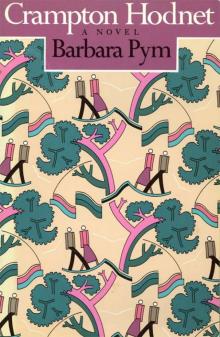 Crampton Hodnet
Crampton Hodnet Quartet in Autumn
Quartet in Autumn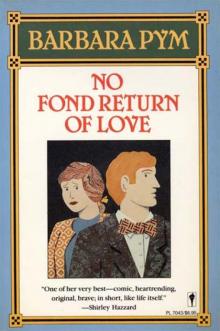 No Fond Return of Love
No Fond Return of Love The Sweet Dove Died
The Sweet Dove Died Excellent Women
Excellent Women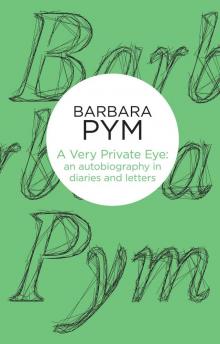 A Very Private Eye: The Diaries, Letters and Notebooks of Barbara Pym
A Very Private Eye: The Diaries, Letters and Notebooks of Barbara Pym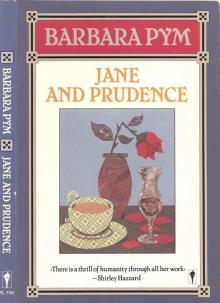 Jane and Prudence
Jane and Prudence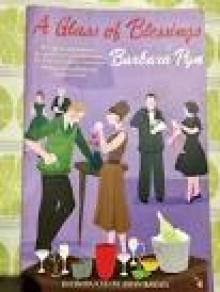 A Glass of Blessings
A Glass of Blessings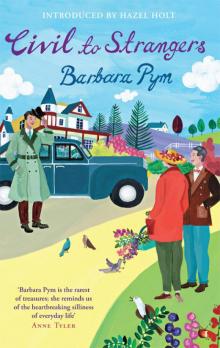 Civil to Strangers and Other Writings
Civil to Strangers and Other Writings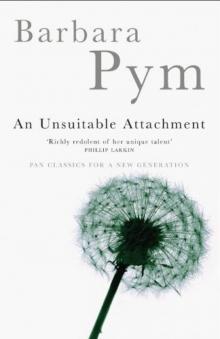 An Unsuitable Attachment
An Unsuitable Attachment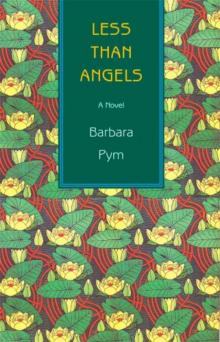 Less Than Angels
Less Than Angels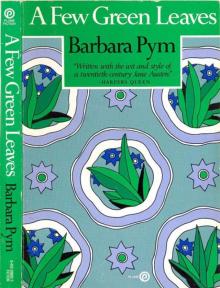 A Few Green Leaves
A Few Green Leaves Civil to Strangers
Civil to Strangers